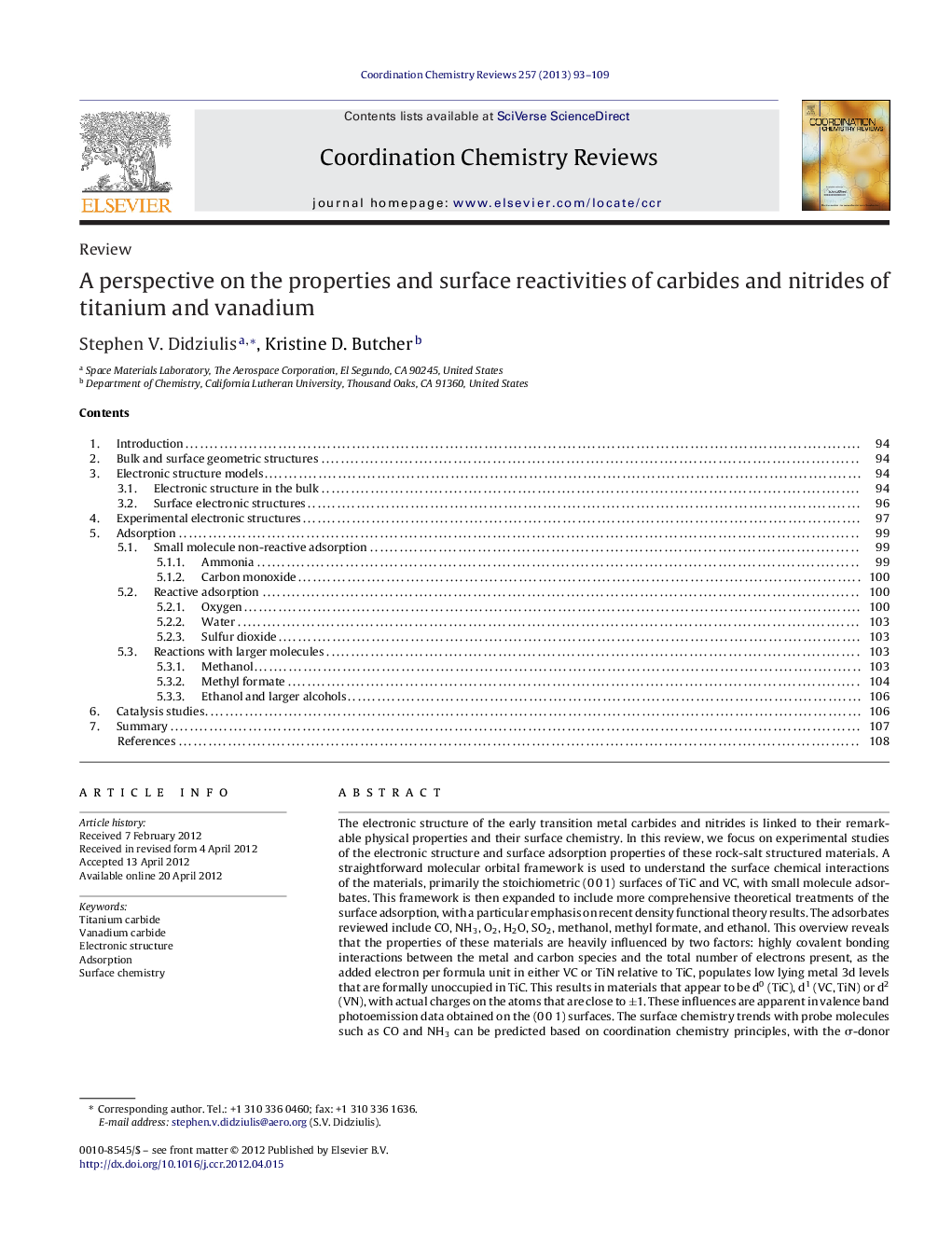| کد مقاله | کد نشریه | سال انتشار | مقاله انگلیسی | نسخه تمام متن |
|---|---|---|---|---|
| 1300099 | 974304 | 2013 | 17 صفحه PDF | دانلود رایگان |

The electronic structure of the early transition metal carbides and nitrides is linked to their remarkable physical properties and their surface chemistry. In this review, we focus on experimental studies of the electronic structure and surface adsorption properties of these rock-salt structured materials. A straightforward molecular orbital framework is used to understand the surface chemical interactions of the materials, primarily the stoichiometric (0 0 1) surfaces of TiC and VC, with small molecule adsorbates. This framework is then expanded to include more comprehensive theoretical treatments of the surface adsorption, with a particular emphasis on recent density functional theory results. The adsorbates reviewed include CO, NH3, O2, H2O, SO2, methanol, methyl formate, and ethanol. This overview reveals that the properties of these materials are heavily influenced by two factors: highly covalent bonding interactions between the metal and carbon species and the total number of electrons present, as the added electron per formula unit in either VC or TiN relative to TiC, populates low lying metal 3d levels that are formally unoccupied in TiC. This results in materials that appear to be d0 (TiC), d1 (VC, TiN) or d2 (VN), with actual charges on the atoms that are close to ±1. These influences are apparent in valence band photoemission data obtained on the (0 0 1) surfaces. The surface chemistry trends with probe molecules such as CO and NH3 can be predicted based on coordination chemistry principles, with the σ-donor ammonia molecule, for example, have very similar interactions with TiC and VC, while CO adsorption is measurably stronger on the VC surface due to π-backbonding interactions. More comprehensive surface models are needed to probe surface reactions as they are heavily influenced by neighboring carbon and metal atoms on the (1 0 0) surface, with the added d-electron density on the metal in VC or TiN enabling stronger surface bonding with reaction intermediates than is found on TiC.
► Significant metal–nonmetal covalent interactions exist in metal carbides.
► d-band occupation varies logically among the carbides and nitrides of V and Ti.
► The d1 configuration of VC and TiN alters surface adsorption relative to d0 TiC.
► Next nearest neighbor metal and non-metal atoms participate in (1 0 0) surface chemistry.
Journal: Coordination Chemistry Reviews - Volume 257, Issue 1, 1 January 2013, Pages 93–109